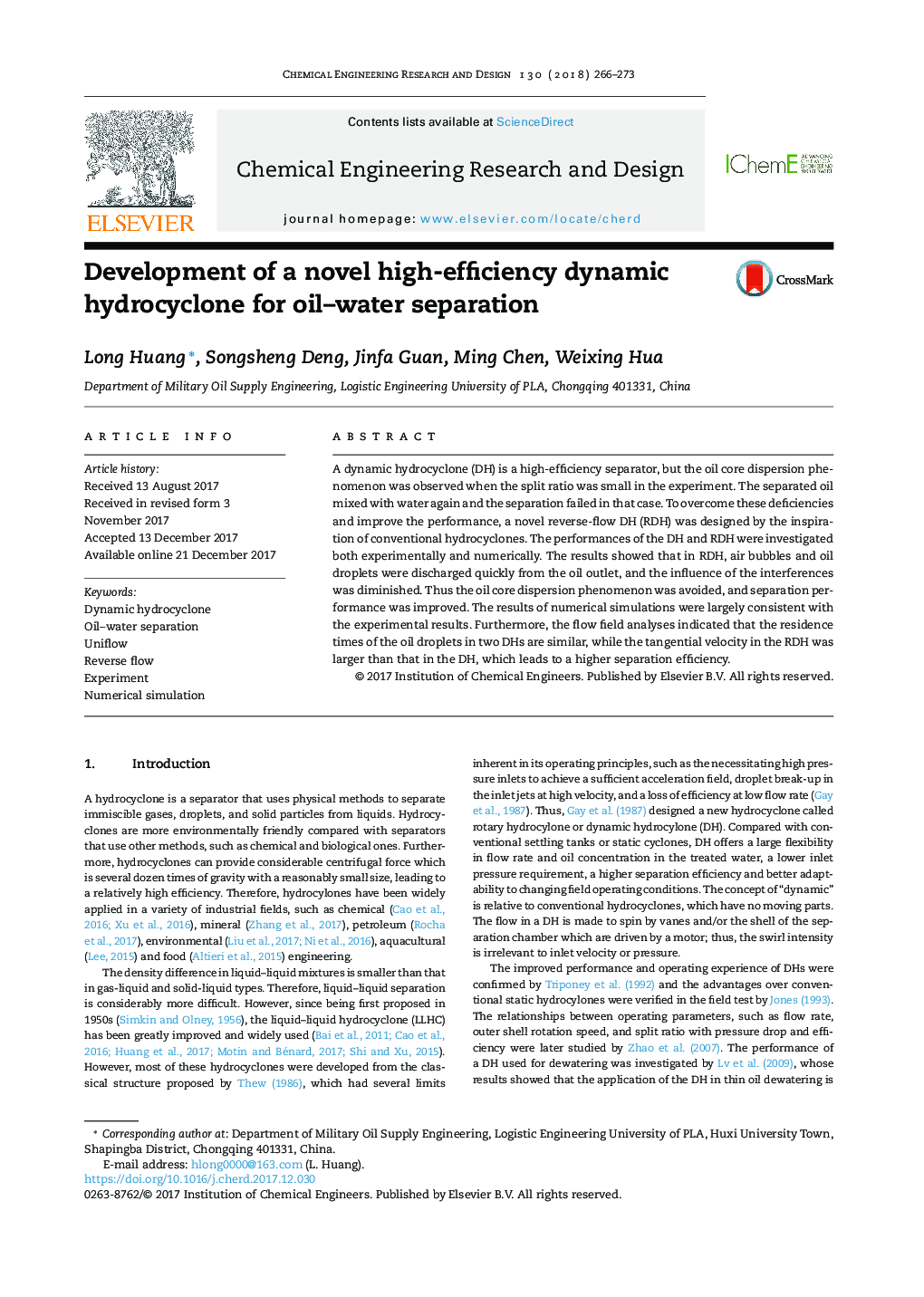| Article ID | Journal | Published Year | Pages | File Type |
|---|---|---|---|---|
| 7006196 | Chemical Engineering Research and Design | 2018 | 8 Pages |
Abstract
A dynamic hydrocyclone (DH) is a high-efficiency separator, but the oil core dispersion phenomenon was observed when the split ratio was small in the experiment. The separated oil mixed with water again and the separation failed in that case. To overcome these deficiencies and improve the performance, a novel reverse-flow DH (RDH) was designed by the inspiration of conventional hydrocyclones. The performances of the DH and RDH were investigated both experimentally and numerically. The results showed that in RDH, air bubbles and oil droplets were discharged quickly from the oil outlet, and the influence of the interferences was diminished. Thus the oil core dispersion phenomenon was avoided, and separation performance was improved. The results of numerical simulations were largely consistent with the experimental results. Furthermore, the flow field analyses indicated that the residence times of the oil droplets in two DHs are similar, while the tangential velocity in the RDH was larger than that in the DH, which leads to a higher separation efficiency.
Related Topics
Physical Sciences and Engineering
Chemical Engineering
Filtration and Separation
Authors
Long Huang, Songsheng Deng, Jinfa Guan, Ming Chen, Weixing Hua,
